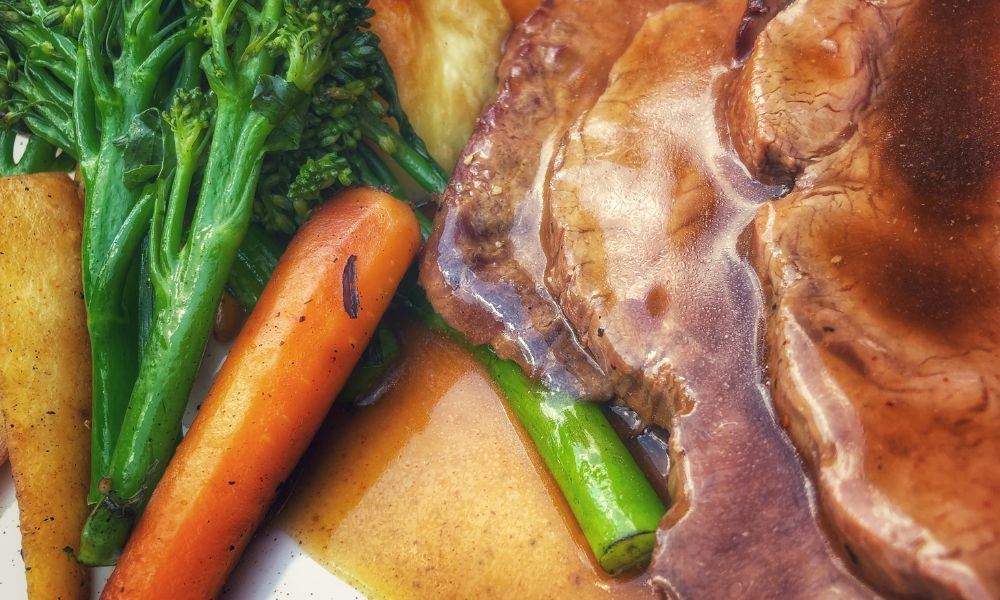Few traditions in Hungary are as closely tied to the comfort and warmth of family life as Sunday lunch. This meal is more than just nourishment—it’s a ritual, a shared experience, and a moment of deserved slowing down after the hustle and bustle of the week.
In Hungarian culture, Sunday lunch holds special significance, as generations have grown up surrounded by the aromas of broth, breaded meats, and homemade desserts. But how did this tradition evolve, what does it mean today, and how is it adapting to modern lifestyles and urban gastronomy?
Roots in tradition and hospitality
The story of Hungarian Sunday lunch is deeply rooted in rural life and Christian customs. In the past, Sunday was often the only day of rest, starting with mass and continuing with a family meal. The noon church bell often signaled it was time to gather around the table. Housewives began preparations on Saturday to ensure everything was fresh and warm by Sunday afternoon.
The classic Sunday menu barely changed for generations. Chicken or beef broth filled with carrots, celery, kohlrabi, and Brussels sprouts became a symbol of care and comfort. The second course was typically breaded pork or chicken schnitzel with parsley potatoes and pickles. Dessert might be a jam roll, cottage cheese strudel, or fruit tart—each with a scent that evoked the warmth of home.

Around the table: community and storytelling
Sunday lunch is not just about food—it’s about togetherness. Conversations, storytelling, laughter, and even friendly disagreements are part of the ritual. After the isolating rhythm of the workweek, this is a time to reconnect. Grandparents share memories of the past, children talk about school, and everyone comes a little closer.
In this sense, Sunday lunch nourishes not only the body but also the soul. It’s a communal experience that builds identity and passes down traditions. In Hungarian culture, it remains one of the quiet yet powerful cornerstones of family life.
Modern life and new traditions
In recent decades, urban lifestyles and global food trends have reshaped Sunday habits. Families are smaller, members often live in different cities or even countries, and daily routines are more flexible. Yet many still try to preserve the tradition of Sunday lunch—perhaps not every week, but certainly on special occasions.
Increasingly, people opt to dine out on Sundays. It’s partly a matter of convenience and partly an opportunity to enjoy quality time together without the burden of cooking and cleaning. Luckily, more restaurants are beginning to embrace the idea of recreating the “Sunday lunch experience” with a modern twist.
A gastronomic escape in the city: Oinos Bistro & Wine Bar
For those looking to enjoy the tradition of Sunday lunch in a refined yet welcoming environment, Oinos Bistro & Wine Bar offers an exceptional experience. Nestled in the heart of Budapest, this gem effortlessly blends Hungarian and Mediterranean flavors while maintaining a sense of homey comfort. The chef’s Sunday specials often evoke classic dishes—such as homemade broth reimagined with a modern flair or perfectly breaded schnitzel made from premium ingredients. Their curated wine list showcases the best of Hungary’s wine regions, making the meal not just a feast, but a true culinary journey that warms both the stomach and the soul.
Regional flavors and family variations
Sunday lunch looks different across Hungary. In the Great Plain region, rich meat broths dominate, while in Transdanubia, game dishes or seasonal vegetable meals might be more common. Dishes like palóc soup or tarragon ragout have become traditional in many homes, standing proudly beside the ever-popular húsleves (meat soup).

Desserts also vary: in some households, strudel is a staple, while others favor jam-filled rolls or custard slices. And every family has its own treasured recipes, secret ingredients, and culinary legends passed down through generations.
An inherited legacy
For many, memories of Sunday lunch are deeply tied to childhood. The smell of soup simmering in a grandmother’s kitchen, the crispy perfection of her schnitzel, or the flaky layers of her homemade pastry—all become emotional touchstones. These moments don’t just inspire nostalgia; they also create a foundation for continuing the tradition in our own ways.
New generations often modernize the menu—using healthier ingredients or experimenting with plant-based alternatives—but the essence remains unchanged: the joy of coming together around a shared meal.

